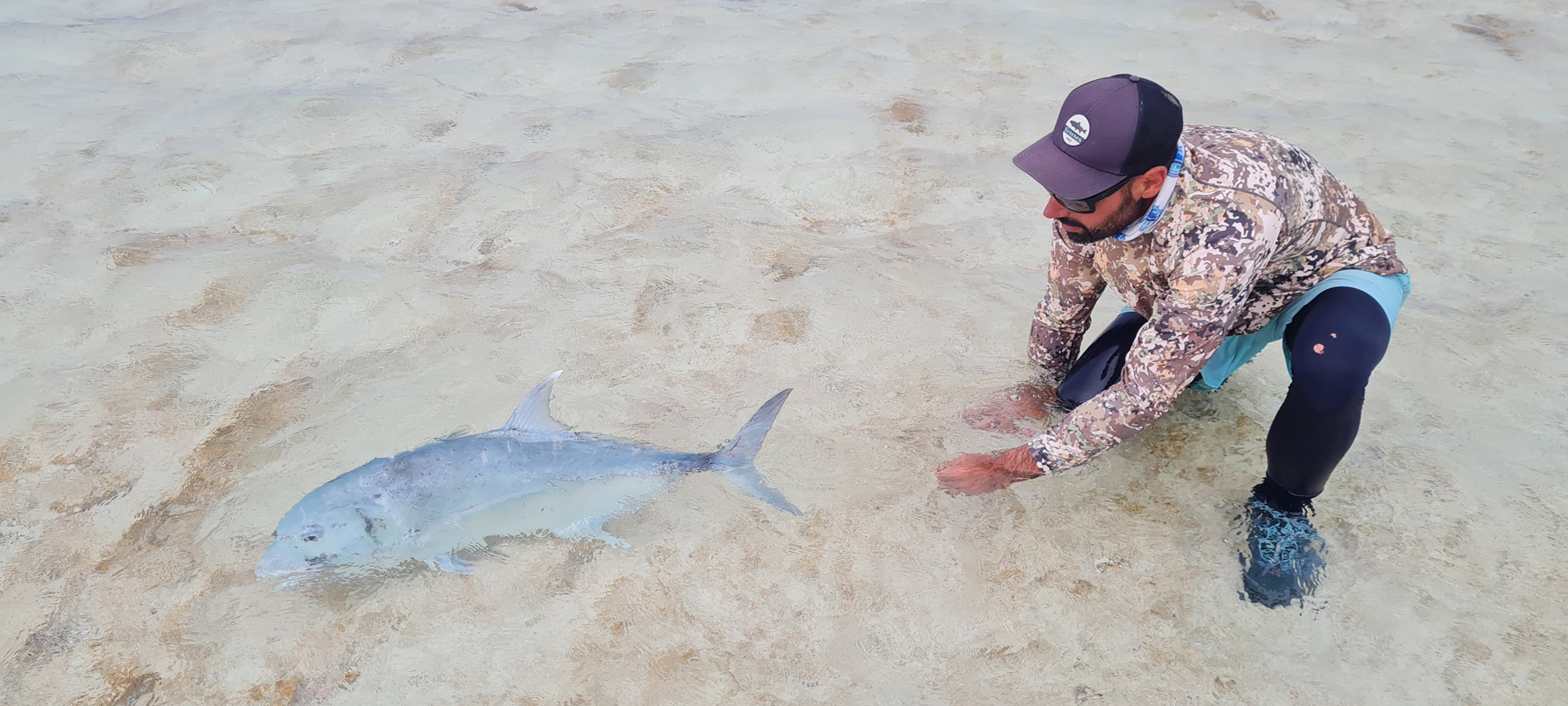
11 minute read
French Polynesia: An expedition to the Forgotten Atolls
French Polynesia, a vast collection of islands and atolls, is composed of several distinct archipelagos: the Society Islands, the Tuamotus, the Marquesas, the Austral Islands, and the Gambier Islands. These remote islands span an area comparable to Europe, creating a unique landscape for the adventure-minded angler. For instance, the Anaa Atoll lies 430 km east of Papeete, the capital of French Polynesia, situated on the island of Tahiti within the Society archipelago. Venturing even further, you’d travel another 1,643 km east-southeast from Papeete to reach Mangareva in the Gambier Islands. This expansive region offers an unparalleled playground for sport fishermen, rich with untapped biodiversity and world-class angling opportunities.
BY HERLÉ HAMON

It’s only when the small planes of domestic flights finally touch down on these far-flung islands that the true scale and beauty of this area become apparent. There’s an undeniable charm in the tranquillity of these islands, the relaxed way of life, and the warm hospitality of the local Polynesian people. My journey exploring this destination started in 2008, staying in small, cozy guesthouses. Back then, some atolls—like Anaa and Tetiaroa—were already on the radar for fly fishing enthusiasts, but these spots didn’t quite satisfy my search for something truly exceptional.

What I did discover, however, was a rich fishing culture rooted in Polynesian tradition. Polynesians are a true people of the sea, experts at mastering age-old fishing techniques for catching fish in the lagoons, particularly the prized bonefish, known locally as “Ioio.” Unfortunately, this species has become rare on most inhabited atolls, even in areas that seem like ideal habitats.

Despite the scarcity, I saw an incredible diversity of fish and noted the thriving coral ecosystems. My first expeditions served as valuable reconnaissance missions, helping me gather information for future adventures. It became clear that the only way to explore the more secluded, untouched areas was by catamaran, which would allow me to reach uninhabited atolls where nature remains untouched by human activity.
Given my experience fishing other remote destinations like the Out Islands of the Seychelles (such as Farquhar and Providence) and the Amirantes group, Christmas Island in the Kiribati archipelago, and exploratory trips in the Maldives, I had a good idea of what I was looking for in French Polynesia.


Ciguatera – A Natural Means of Conservation
Using the well-connected atolls of Rangiroa and Fakarava in the Tuamotus as starting points, I embarked on a series of exploratory trips that revealed an extraordinary array of large reef predators, sharks, and some of the healthiest marine ecosystems I’d ever encountered. Not all of these expeditions were equally successful, but each revealed unique insights, making the journey as rewarding as the destination.

Interestingly, one reason these ecosystems remain so well preserved is the presence of ciguatera, a toxin that accumulates in certain fish due to coral degradation. This toxin makes many predatory fish — particularly piscivorous species — unsafe for consumption, which ironically acts as a natural conservation measure. Having personally experienced ciguatera, I can say it’s something to avoid at all costs if you don’t want to endure severe sickness and a lengthy recovery period.

Ciguatera’s presence in the Tuamotus deters locals from consuming larger reef fish, allowing populations of groupers, jacks, and snappers to thrive, resulting in an impressive density of mature, healthy fish that you rarely encounter in other fishing destinations. Seeing such abundant marine life motivated me to delve even deeper into these “virgin” atolls of French Polynesia.

A Multitude of Fish
Over time, I established a routine for organizing expeditions here, making the longest crossings between atolls at night to maximize daytime fishing on the flats and reefs.
When I began these trips, my focus was on fishing the main channels, where you can find giant trevally (GTs), dogtooth tuna, large barracudas, groupers, and a wide variety of sharks. But now, I explore the inner lagoons, navigating through coral-lined paths during incoming tides for safe entry and often slaloming between massive coral heads to access prime fishing areas.

The sheer size of these atolls is often astonishing. Some are ten to twenty times larger than those in the Seychelles, for instance. We typically anchor as close as possible to promising fly-fishing spots, using a semi-rigid hull boat for landings on the flats, which we explore primarily on foot.

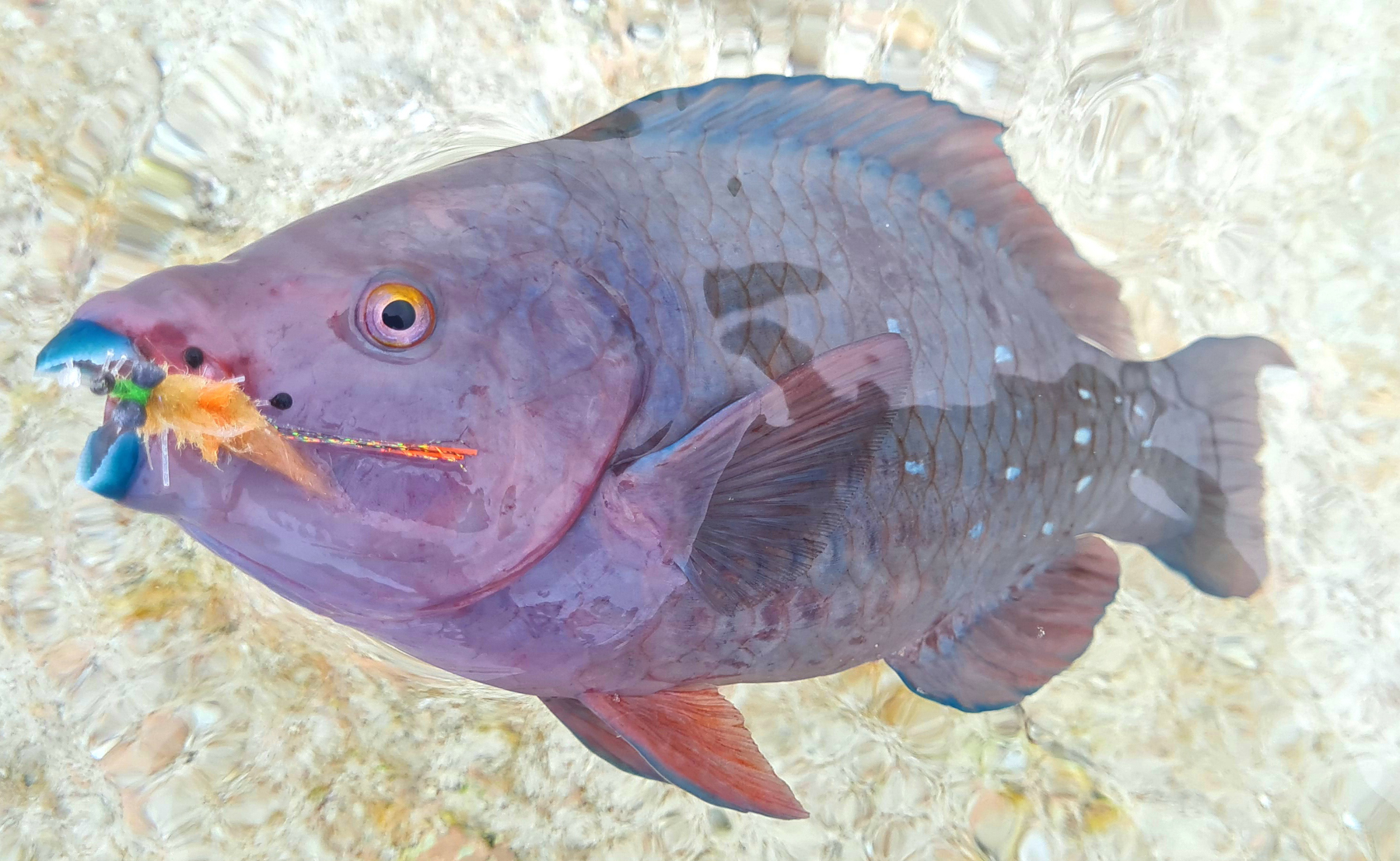
Not for Beginners
Physical fitness is essential for these expeditions, as it’s common to wade several kilometres across the shallows and around deserted “Motus,” each more spectacular than the last. This is not a trip for beginner saltwater fly anglers; it’s wild, remote, and physically demanding, requiring a solid foundation of experience and endurance to fully appreciate.
The landscape feels like a tropical postcard brought to life. The motus are lush with tall coconut trees — remnants of an era when nearly all motus were maintained for the copra industry.
The flats here are some of the most photogenic I’ve encountered, vast expanses of pristine white sand interspersed with multi-coloured corals and bordered by vibrant turquoise channels.

Triggerfish in Numbers
This incredible habitat fosters a diverse and healthy ecosystem. I’ve rarely seen such numbers of triggerfish, particularly the titan or moustache triggerfish and the yellow-margin triggerfish, tailing in the sandy areas. It’s not unusual on certain tides to cast to thirty or more triggers in a single session. Since they’ve never encountered anglers, these fish aren’t “leader shy,” allowing for more robust setups.
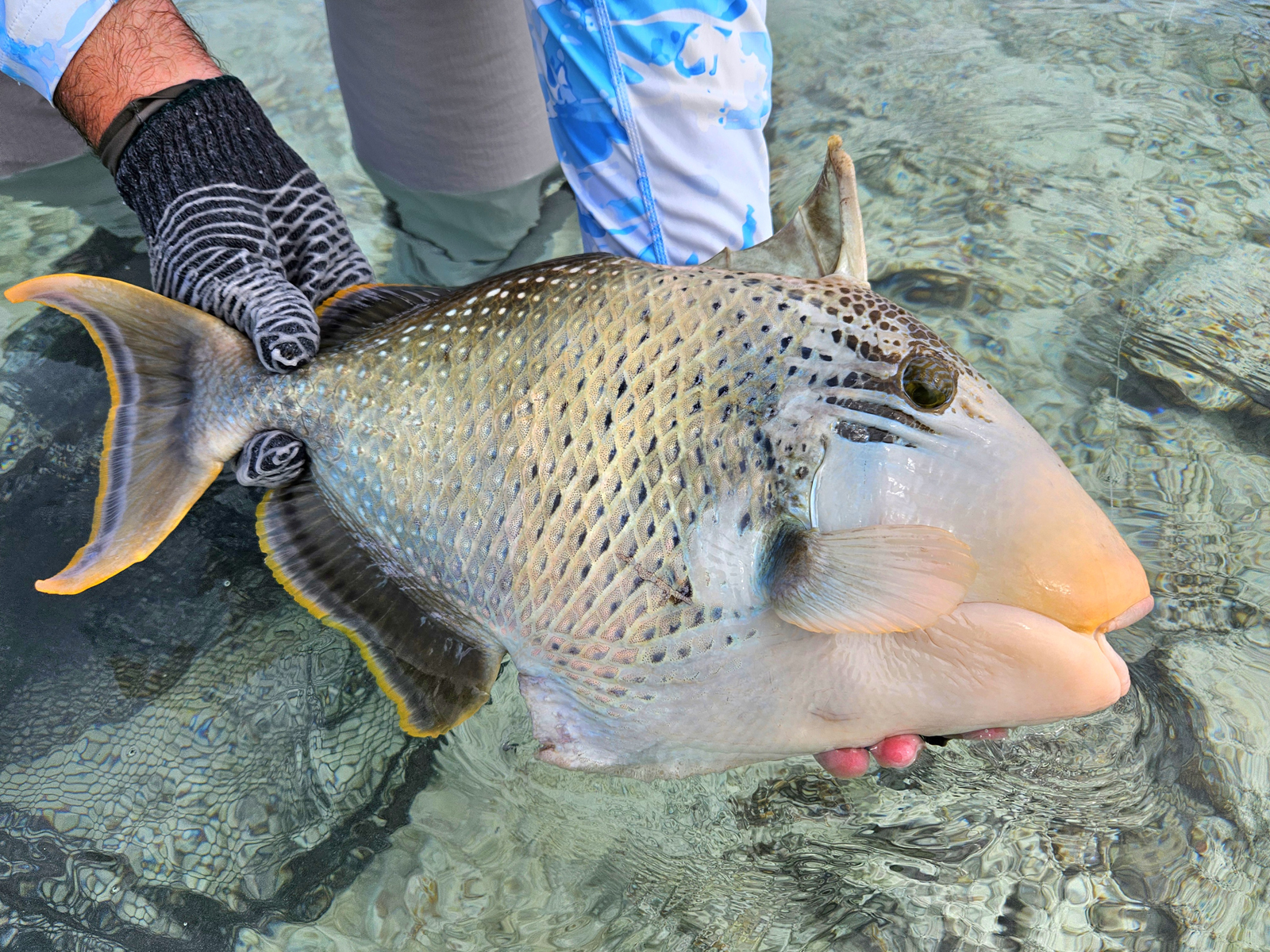
I usually fish for them with 10-weight rods, using a 30- to 40-lb leader to keep them away from the coral outcroppings. Initially, I started with 8-weight rods and 20-lb tippets, but I soon found these setups inadequate, as I lost about four out of every five fish.
“The landscape feels like a tropical postcard brought to life”

Attention to detail with tackle is crucial here, especially regarding hook quality, as these big triggers have formidable teeth akin to wire cutters. The Flexo Crab is a reliable fly in this area, though shrimp imitations also work well. Despite their inexperience with anglers, triggers remain cautious, and you must approach them carefully and cast with precision.

One of my best days on the flats ended with nineteen landed triggers and around a dozen more that got away. A typical day involves casting to about twenty triggers, with a successful landing rate between zero and ten, depending on conditions and the fish’s behaviour.

Trophy Bonefish
Alongside the triggerfish, you’ll also encounter large bonefish, which here range from 6 to over 10 pounds. Due to the environment, fishing for bonefish here is a bit different — heavy leaders of up to 40 lb are necessary to prevent breakoffs against coral. Bonefish fishing here is far more intense than in destinations like the Florida Keys. Aside from the coral, patrolling sharks around the flats mean that fights need to be short for a successful release.
Although bonefish populations aren’t as concentrated here, the ones you do find are trophy-sized. Most of the time, I’m casting to solitary fish or small groups, and they’re generally not picky about flies. However, I’ve had encounters with massive fish over 12 pounds that refused my flies entirely. For these, large crab patterns tied on size 2 hooks seem to be more effective.

Bluefin Trevally
Another frequently encountered species on these flats is the blue trevally, which varies in size from 3 to 25 pounds. They’re incredibly fast and aggressive, taking nearly any fly, from shrimp patterns on size 6 hooks to large brush flies up to size 4/0. The bluefin trevally has a power-to-weight ratio that rivals, if not exceeds, that of the GT, so a 9/10-weight setup is the minimum here; 8-weight rods simply won’t cut it.
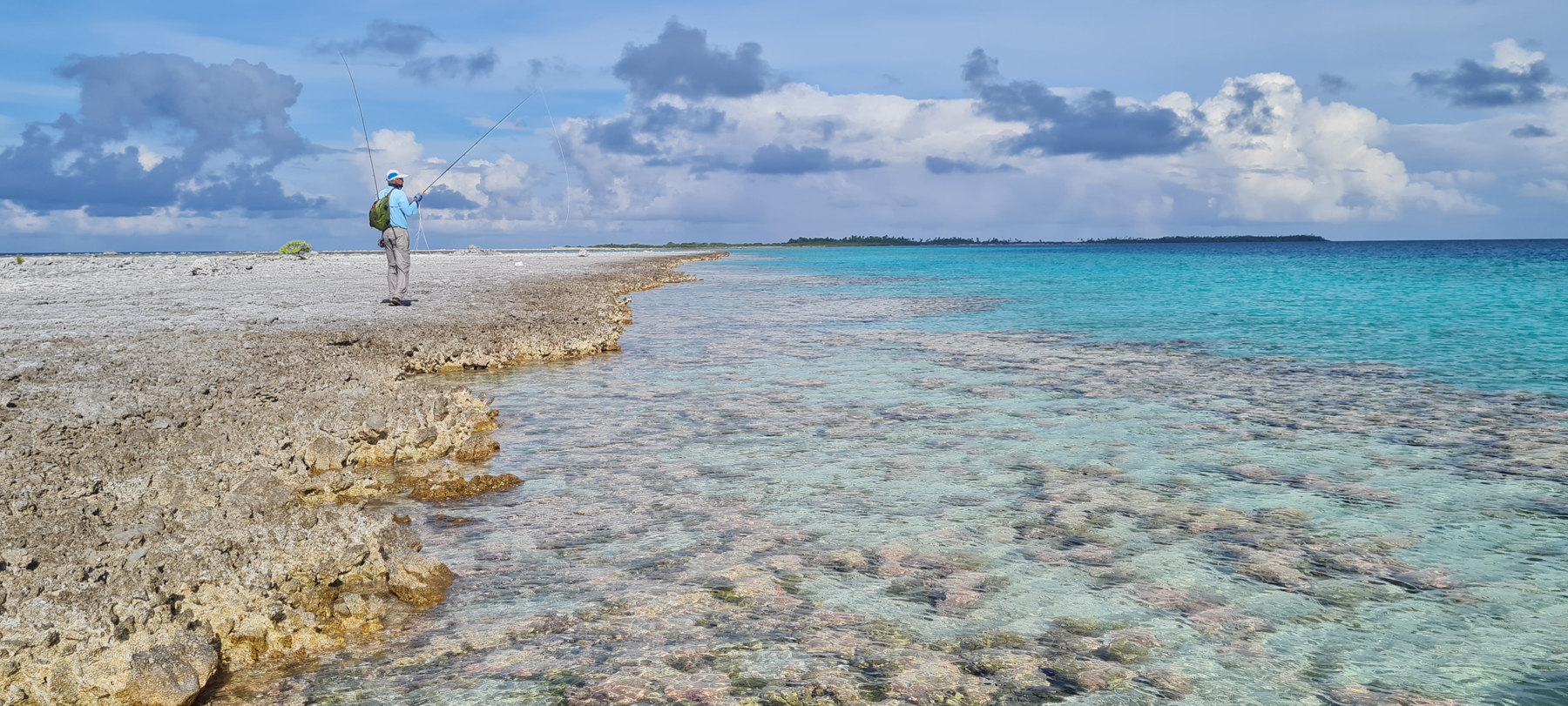
Blue trevallies are often accompanied by large emperor fish, especially the long-nose emperor, which sometimes attack flies just before the trevally gets to them. The emperors are among the most aggressive fish I’ve encountered, occasionally striking right at the rod tip! They can be found on the flats as well as around the coral reefs, similar to the bluefin trevally.

12-weight Game Fish
When we venture to the ocean side, we enter an entirely different world. Here, I often use two rods, at least one of which is a 12-weight. These reef flats are incredibly rich in large predators. I’ll admit, I had my fair share of hard lessons before figuring out how to handle these powerful reef fish, which include groupers and the legendary Napoleon wrasse.
The high density of reef predators in these waters is remarkable, particularly the groupers and wrasse, which instinctively seek out coral cover after striking. Hooking several Napoleon wrasse in a single day is not uncommon, although landing them is a different story. Over time, I’ve learned that the largest wrasse often show up after catching a bluefin trevally or a Bohar snapper — another commonly found species here.
“Hooking several Napoleon wrasse in a single day is not uncommon”

One strategy is to wait for these big blue fish to move in with the waves before presenting the fly. Large, colourful streamers in red or blue, tied on size 6/0 hooks, work well, and once hooked, a Maori wrasse will rarely let go. But be prepared — these fish will immediately try to return to the safety of the coral, requiring strength and quick reflexes to prevent them from breaking off. I’ve landed a few wrasse weighing between 40 and 80 pounds, but I’ve also lost many to their coral retreats. Occasionally, I spot a GT in the waves, but the short distance to the reef makes it tricky to land one without breaking off.


A Living Aquarium
French Polynesia is an angler’s paradise, a “living aquarium” where you can catch over thirty fish species on the fly within a single trip. Hidden among the motus are untouched flats filled with large bonefish, reefs patrolled by GTs, and deep lagoons teeming with Napoleon wrasse, all set against the stunning backdrop of the South Pacific.
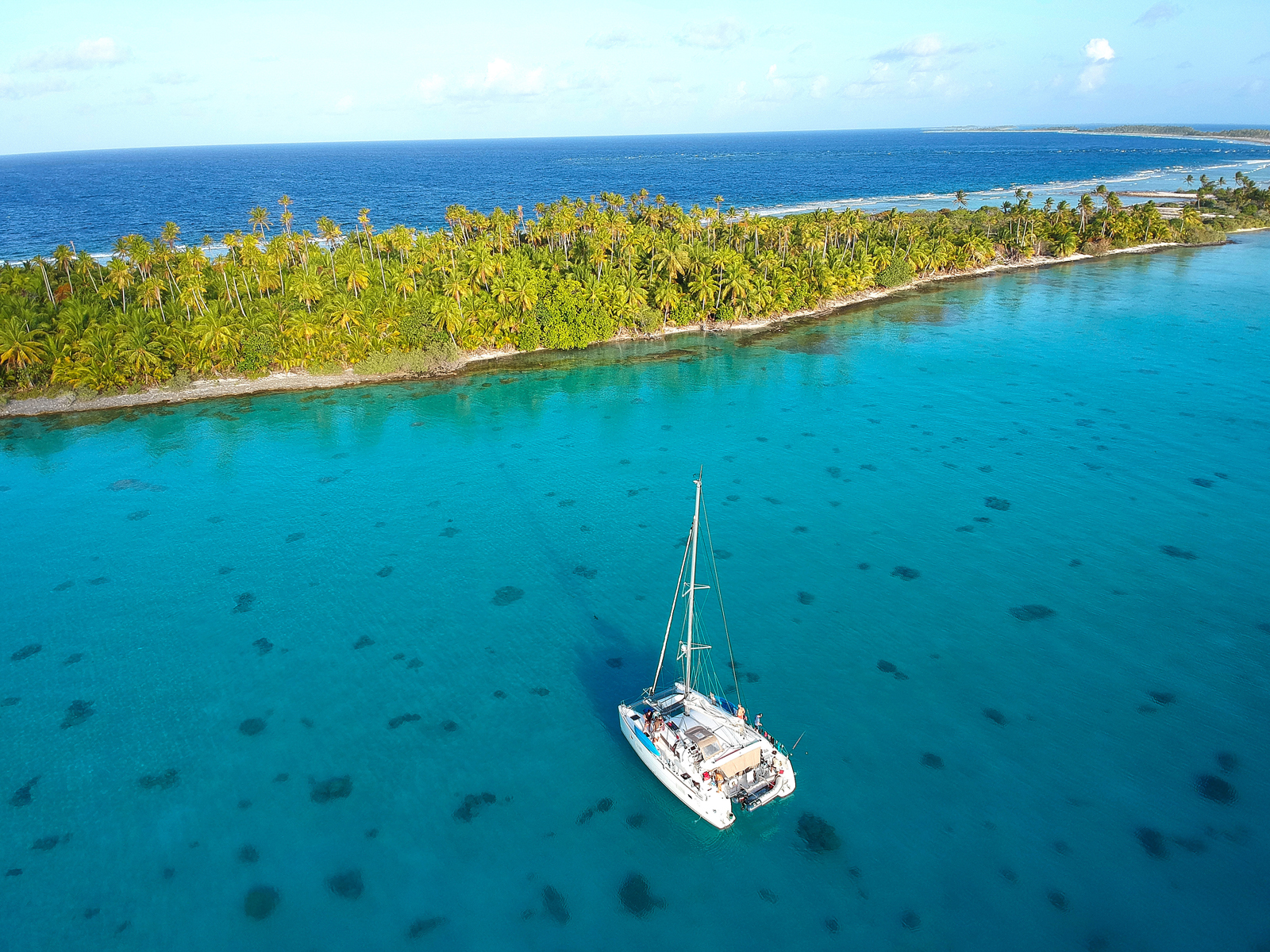
French Polynesia remains one of the last bastions of unspoiled natural beauty, where every fish, every reef, and every wave tells a story of resilience and survival.
As we sailed back, leaving these “forgotten” atolls behind, I felt a renewed commitment to protect and share this wonder with those willing to explore respectfully, keeping these incredible places intact for generations to come.


Want to fish French Polynesia?
For his upcoming 2025/2026 expeditions to French Polynesia, Herle will be utilizing a new catamaran accommodating only small groups of three to four anglers to provide an intimate and exclusive experience.
More information about Herle and his fly fishing trips, please visit: www.2hflyfishing.com
Contact Information:
For more details or to join a future expedition, reach Herle Hamon at: herlehamon@gmail.com


